Recent studies show links between asthma and sulphur pollution from geothermal power plants. Reykjavík Energy denies their connection with newly discovered effluent water lagoons in Hellsheiði. The Parliament’s Industries Committee orders a report that condemns preservation of nature, presented in a parliamentary resolution for Iceland’s Energy Master Plans. Alterra Power announces lower revenues in Iceland and their plans to enlarge the Reykjanesvirkjun geothermal power plant despite fears of over-exploitation. Greenland faces Alcoa’s plans of an import of cheap Chinese labour en masse, while Cairn Energy dumps toxic materials into the ocean off the country’s shores.
This is the content of Saving Iceland’s first round of brief monthly news from the struggle over Iceland’s wilderness and connected struggles around the world.
Hellisheiði: Asthma, Sulphur Pollution and Effluent Water Lagoon
Those who promote large-scale geothermal energy production as green and environmentally friendly, are once again forced to face another backlash as a recent research suggests a direct link between sulphur pollution from the Hellisheiði geothermal plant and asthma among the inhabitants of Reykjavík. The results of this particular research, which was done by Hanne Krage Carlsen, doctorate student of Public Health at the University of Iceland, were published in the Environmental Research journal earlier this year, showing that the purchasing of asthma medicine increases between 5 and 10 percent in accordance with higher sulphur pollution numbers in the capital area of Reykjavík.
Adding to the continuous unmasking of the geothermal green myth, environmentalist Ómar Ragnarsson recently discovered and documented new lagoons, created by run-off water from Reykjavík Energy’s geothermal power plant in Hellisheiði. At first Reykjavík Energy denied that the lagoons’ water comes from the company’s power plant, but were forced to withdraw those words only a few days later. Ómar had then brought a journalist from RÚV, the National Broadcasting Service, to the lagoons and traced the water to the plant. Despite the company’s withdrawal, they nevertheless rejected worries voiced by environmentalists, regarding the very possible pollution of ground water in the area, and insisted that this is allowed for in the plant’s license.
According to the plant’s license the run-off water should actually be pumped back, down into earth, in order to prevent polluting impacts and the creation of lagoons containing a huge amount of polluting materials. Ómar’s discovery shows that this is certainly not the case all the time, and additionally, the pumping that has taken place so far has proved to be problematic, creating a series of man-made earthquakes in the area, causing serious disturbances in the neighbouring town of Hveragerði.
In an article following his discovery Ómar points out that for the last years, the general public has not had much knowledge about geothermal power plants’ run-off water, and much less considered it as a potential problem. Ómar blames this partly on the Icelandic media, which have been far from enthusiastic about reporting the inconvenient truth regarding geothermal power production. One of these facts is that the effluent water, which people tend to view positively due to the tourist attraction that has been made of it at the Blue Lagoon, is a token of a serious energy waste, as the current plants use only 13% of the energy while 87% goes into the air or into underutilized run off-water. These enlarging lagoons — not only evident in Hellisheiði but also by the geothermal power plants in Reykjanes, Svartsengi, Nesjavellir and Bjarnarflag — suggest that the energy companies’ promises regarding the pumping of run-off water, are far from easily kept.
The Fight Over Iceland’s Energy Master Plan Continues
During the last few weeks, the Icelandic Parliament’s Industries Committee received 333 remarks in connection with the committee’s work on a parliamentary resolution for Iceland’s Energy Master Plan. The resolution, which was presented by the Ministers of Industry and of Environment in April this year, gives a green light for a monstrous plan to turn the Reykjanes peninsula’s geothermal areas into a continuous industrial zone.
The remarks can generally be split into two groups based on senders and views: Firstly, individuals and environmentalist associations who, above all, protest the afore-mentioned Reykjanes plans. Secondly, companies and institutions with vested interests in the further heavy industrialization of Iceland who demand that the Master Plan’s second phase goes unaltered through parliament — that is, as it was before the parliamentary resolution was presented, in which the much-debated Þjórsá dams and other hydro power plants were still included in the exploitation category. Saving Iceland has published one of the remarks, written by Helga Katrín Tryggvadóttir, which differs from these two groups as it evaluates energy production and nature conservation in a larger, long-term context.
During the process, the head of the Industries Committee, Kristján Möller — MP for the social-democratic People’s Alliance, known for his stand in favour of heavy industry — ordered and paid for a remark sent by management company GAMMA. The company first entered discussion about one year ago after publishing a report, which promised that the national energy company Landsvirkjun could become the equivalent of the Norwegian Oil Fund, if the company would only be permitted to build dams like there is no tomorrow.
In a similarly gold-filled rhetoric, GAMMA’s remark regarding the Energy Master Plan states that the changes made by the two ministers — which in fact are the results of another public reviewing process last year — will cost Iceland’s society about 270 billion ISK and 5 thousand jobs. According to the company’s report, these amount are the would-be benefits of forcefully continuing the heavy industrialization of Iceland, a plan that has proved to be not only ecologically but also economically disastrous. Seen from that perspective, it does not come as a surprise realizing that the management company is largely staffed with economists who before the economic collapse of 2008 lead the disastrous adventures of Kaupþing, one of the three biggest Icelandic bubble banks.
Alterra Power: Decreases Revenue, Enlargement Plans in Iceland
Canadian energy company Alterra Power, the majority stakeholder of Icelandic energy company HS Orka, recently published the financial and operating results for the first quarter of this year. “Consolidated revenue for the current quarter was $16.4 million compared to $18.9 million in the comparative quarter,” the report states, “due to lower revenue from our Icelandic operations as a result of lower aluminium prices, which declined 13.9% versus the comparative quarter.”
At the same time, the company’s Executive Chairman Ross Beaty stated that Alterra is preparing for an enlargement of the Reykjanesvirkjun geothermal power plant, located at the south-west tip of the Reykjanes peninsula, which should increase the plant’s production capacity from the current 100 MW to 180 MW. The construction is supposed to start at the end of this year and to be financed with the 38 million USD purchase of new shares in HS Orka by Jarðvarmi, a company owned by fourteen Icelandic pension funds.
According to Alterra, permission for all construction-related activities is in place. However, as Saving Iceland has reported, Iceland’s National Energy Authority has officially stated their fears that increased energy production will lead to an over-exploitation of the plant’s geothermal reservoir. Furthermore, Ásgeir Margeirsson, Chairman of HS Orka, responded to Alterra’s claims stating that due to a conflict between the energy company and aluminium producer Norðurál, the construction might not start this year. According to existing contracts, the energy from the enlargement is supposed to power Norðurál’s planned aluminium smelter in Helguvík. That project, however, has been on hold for years due to financial and energy crisis, and seems to be nothing but a fantasy never to be realised.
Greenland: Cheap Chinese Labour and Toxic Dumping
The home rule government of Greenland is split in their stand on Alcoa’s plans to import 2 thousand Chinese workers for the construction of the company’s planned smelter in Maniitsoq. The biggest governing party, Inuit Ataqatigiit, is against the plan as the workers will not be paid the same amount as Greenlandic labour. On the other hand, the Democratic Party, which has two of the government’s nine ministerial seats, is in favour of the plans on the grounds that the workers’ working condition and payments will be better than in China.
In Iceland, during the construction of the Kárahnjúkar dams and Alcoa’s aluminium smelter in Reyðarfjörður, Chinese and Portuguese migrant workers were imported on a mass scale. More than 1700 work-related injuries were reported during the building of the dams, ten workers ended up with irrecoverable injuries and five workers died. In 2010, the Occupational Safety and Health Authority stated that the Kárahnjúkar project was in a different league to any other project in Iceland, with regard to work-related accidents.
At the same time as Greenland’s government argued over Alcoa, Danish newspaper Politiken reported that the Scottish oil company Cairn Energy — a company that, along with Indian mining giant Vedanta, shares the ownership of oil and gas company Cairn India — is responsible for dumping 160 tons of toxic materials into the ocean in the years of 2010 and 2011. The dumping is linked to the company’s search for oil off Greenland’s shore and is five times higher than the amount of comparable materials dumped in 2009 by every single oil platform of Denmark and Norway combined.
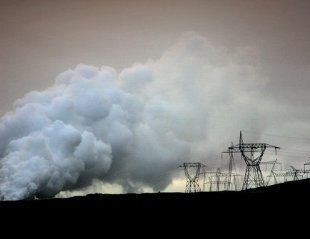
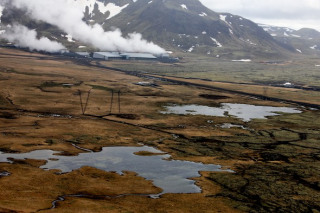
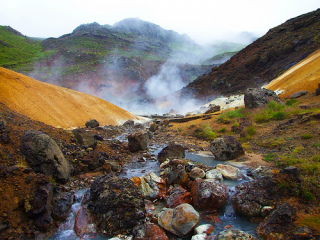
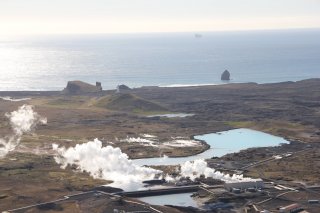
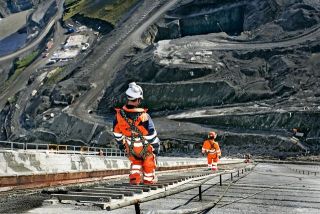
Thanks so much for this! An excellent summary of news, really appreciated. Really worrying times in the arctic circle..this must be stopped. Icelandic and Greenlandic environmentalists should unite to prevent permanent damage to their fragile ecosystems and a total eradication of native culture by American and American-esq companies.
Several weeks ago Scottish newspaper the Herald revealed that the UK govt had pushed the Cairn-Vedanta deal against the Indian govt´s wishes – fearing that Vedanta was too risky to run an oil company. Emails reveal that Cairn boss Bill Gammell (childhood friend of Bush and Blair) could get the UK govt to act at the highest levels at the drop of a hat to clinch his big money deal. Now a case in the Indian Supreme Court claims this deal cost the Indian exchequer £11.6 in lost royalties.
Just goes to show how well connected industry bosses are immune to law and regulation and have free access to power and government.
See http://www.robedwards.com/2012/05/revealed-the-dinners-that-drove-disputed-indian-oil-deal.html
and full article at:
http://www.robedwards.com/2012/05/revealed-the-dinners-that-drove-disputed-indian-oil-deal.html